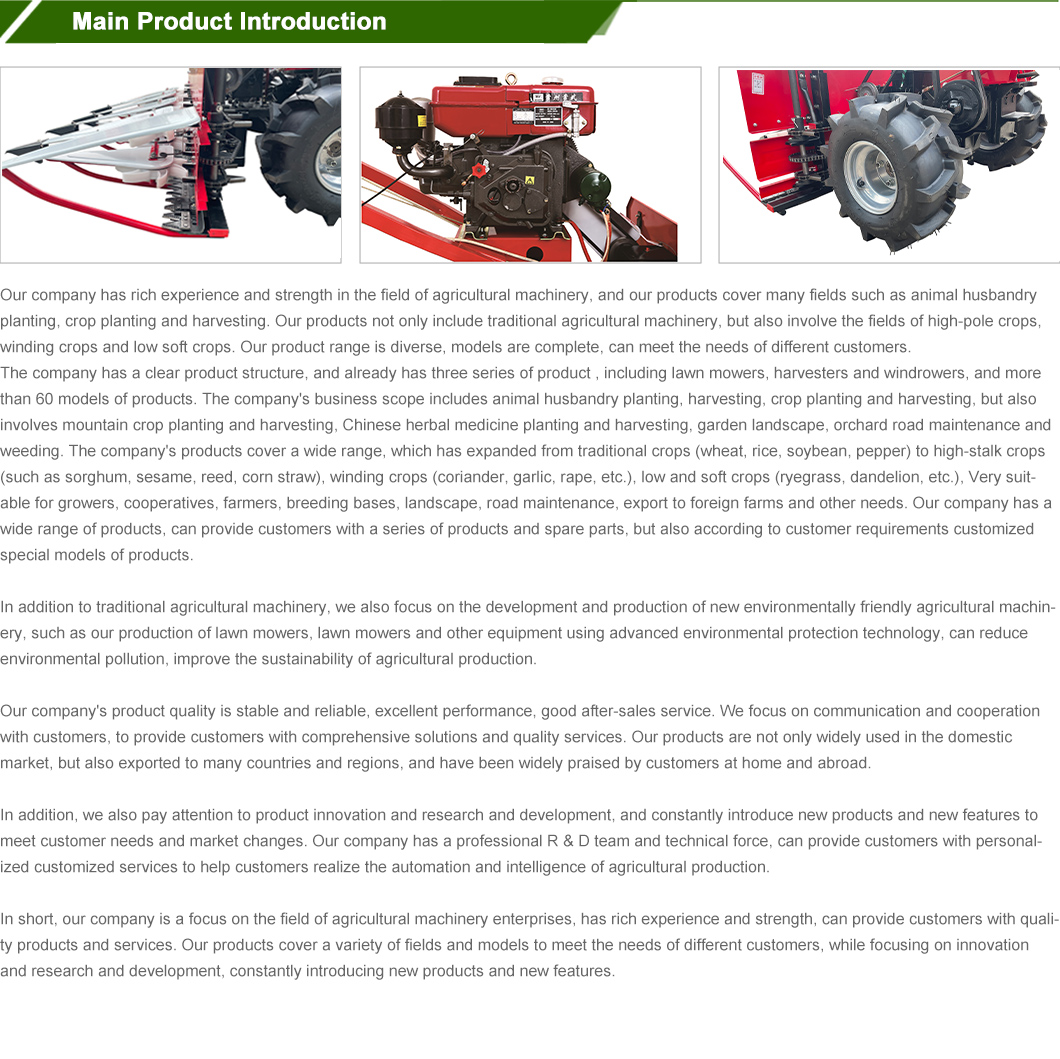crop reaper
The Evolution and Impact of the Crop Reaper
Agriculture has been the backbone of human civilization for thousands of years, with advancements in farming techniques radically transforming the way we produce food. One of the most revolutionary inventions in agricultural history is the crop reaper. The crop reaper significantly changed the landscape of farming by introducing mechanization into the harvesting process, increasing efficiency and productivity.
The concept of the crop reaper can be traced back to the early 19th century. Before its invention, harvesting grain was an arduous and labor-intensive task that typically relied on hand tools like sickles and scythes. Farmers would often toil under the sun for hours, cutting down crops manually, which limited the scale of farming operations and increased the time required to gather produce. With the rapid population growth during the Industrial Revolution, there was an urgent need for more efficient farming methods to meet food demands.
The first practical crop reaper was invented by Cyrus McCormick in 1831
. McCormick's design utilized a series of blades and a mechanism for gathering and cutting crops, significantly reducing the time needed to harvest. This innovation not only enhanced productivity but also allowed farmers to cultivate larger fields. The original McCormick reaper was pulled by horses, and it drastically cut down the labor needed for harvesting grain. As a result, farmers began to see an increase in profits and an improvement in their quality of life.The impact of the crop reaper extended beyond just improved efficiency. The introduction of this machine initiated a shift in the agricultural workforce. Many laborers who had previously relied on seasonal work began to leave their rural communities for employment opportunities in industries and urban centers. This led to a gradual decline in the agricultural labor force, reshaping demographics and contributing to urbanization. While this transformation had mixed effects—boosting economic development while also leading to labor shortages in rural areas—it laid the groundwork for more advanced agricultural practices.
crop reaper

Over the years, the crop reaper underwent numerous transformations. The advent of mechanized farming equipment in the late 19th and early 20th centuries, with improvements in technology and materials, led to the development of more efficient harvesters. By the mid-20th century, combines, which can harvest and thresh grain in a single operation, became common. This further streamlined the harvesting process and symbolized the growing reliance on advanced machinery in agriculture.
The economic implications of the crop reaper and its modern counterparts cannot be overstated. By facilitating higher yields and reducing time and labor costs, these machines made farming more profitable. Today, with the global population projected to reach nearly 10 billion by 2050, mechanization, including advanced harvesters, will be crucial in meeting the rising demand for food.
However, the movement towards greater mechanization also poses challenges. Large-scale farming driven by technology can lead to environmental degradation, loss of biodiversity, and soil depletion. Moreover, the reliance on machinery means that many farmers must invest heavily in equipment and maintenance, which can be financially straining. There is also a growing concern about how technology affects rural communities and livelihoods, as small-scale farmers struggle to compete with large agribusinesses.
In recent years, the dialogue around sustainable farming practices has gained momentum. The focus now shifts to developing technologies that not only boost productivity but also prioritize environmental stewardship. Innovations such as precision agriculture and the use of drones and sensors are emerging as important complements to traditional farming methods. These advancements aim to enhance efficiency while minimizing environmental impact, ensuring that farming remains viable for future generations.
In conclusion, the crop reaper has played a pivotal role in transforming agriculture. From its inception in the early 19th century to the sophisticated harvesters of today, it has consistently enabled farmers to increase productivity and adapt to changing demands. As we move forward, the challenge will be to embrace innovation while ensuring that our agricultural practices are sustainable and equitable, addressing both the needs of consumers and the welfare of the planet. The evolution of the crop reaper stands as a testament to human ingenuity and the ongoing quest to meet the challenges of food production in a changing world.
Latest news
-
When to Upgrade Your Old Forage HarvesterNewsJun.05,2025
-
One Forage Harvester for All Your NeedsNewsJun.05,2025
-
Mastering the Grass Reaper MachineNewsJun.05,2025
-
How Small Farms Make Full Use of Wheat ReaperNewsJun.05,2025
-
Harvesting Wheat the Easy Way: Use a Mini Tractor ReaperNewsJun.05,2025
-
Growing Demand for the Mini Tractor Reaper in AsiaNewsJun.05,2025
